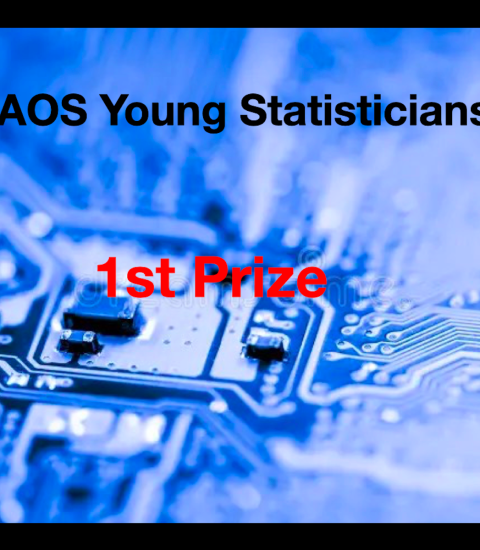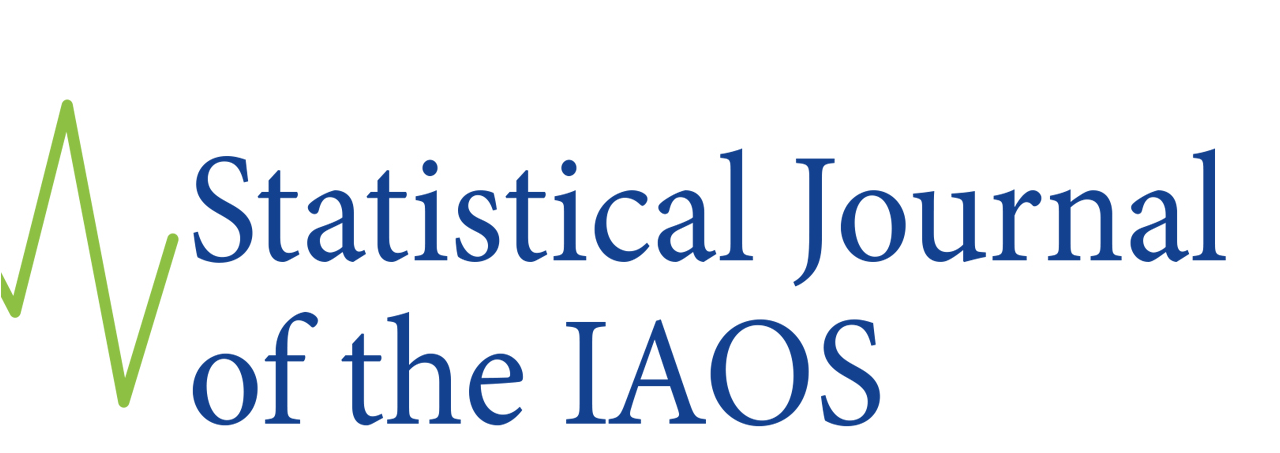
Benjamin Long works since February 2022 as a Data Scientist at the Australian Bureau of Statistics. He finished in 2021 his studies in Business Commerce, Accounting and Business Science and Statistics at the University of New South Wales.
Nelson Chua works since 2019 at the Australian Bureau of Statistics, his current role is that of a Senior Data Scientist. In 2018 he achieved his Bachelor of Statistics (Honours) & Bachelor of Actuarial Studies from the Australian National University. He is currently a Ph.D. Candidate in Statistics at the Australian National University.
Dear Benjamin and Nelson, please accept my warmest congratulations on this prize.
SJIAOS: As a starter for this interview, can you both tell us why you chose to join the Australian Bureau of Statistics?
Nelson: The ABS offers a variety of statistical/methodological work that you won’t find in most other organizations. I’ve worked here for almost five years, and I’ve had the pleasure of working on many interesting projects in areas such as survey sampling, data integration, machine learning, and small-area estimation.
Benjamin: I decided to join the ABS as it is a leader and innovator in the data landscape, both nationally and globally. Before joining the ABS, I held an internship as a research assistant, and I was also completing my undergraduate studies. From my time there, it was clear to me the importance of ABS statistics to policymaking and academic research. This drove my personal desire to join the ABS and contribute to society in a meaningful way.
SJIAOS: Your prize-winning manuscript is on small area estimation methodology for time-to-event data. Can you tell us a bit more about the content and the motivation for this specific research?
Nelson: Like many other countries, Australia is facing a tightening housing market because the population is growing and the supply of housing is limited. The Australian government is interested in better understanding housing supply, and so they’ve funded the ABS to provide statistics on this at finer levels of geographical detail than currently offered. As part of this, Ben and I were tasked with developing a method for estimating the number of newly completed dwellings each quarter within Statistical Area level-2s (roughly the suburb level). The solution we settled on was motivated by the data available to us, and fortuitously involved a fusion of small-area estimation and survival modeling techniques, which is quite a novel combination!
SJIAOS: What were the main challenges you experienced in doing this research?
Nelson: This research project was the first time that I had to manage an ABS project from start to finish, and so the development of the end-to-end methodology was my greatest challenge. We only had a few months to develop a fit-for-purpose methodology, and this involved an iterative process of researching, coding, testing, and receiving feedback from our colleagues. Fortunately, Ben was a great person to share ideas with and he was also an excellent source of ‘parallel processing power’, which made the entire development process substantially more productive (and fun).
Benjamin: For me, this was the first project that I ever worked on at the ABS. It was challenging to transition from full-time study to work and to juggle the competing priorities of training and project work. I was fortunate to have Nelson as my first supervisor and the wider Methodology and Data Science Division for support as they made sure that my first few months at the organization were not too overwhelming by checking in regularly.
SJIAOS: And how were you informed about the YSP prize and what finally stimulated you to write the paper?
Benjamin: We had the opportunity to present the research to our ABS colleagues and external academics. From there, our Chief Methodologist Dr. Anders Holmberg suggested we prepare a paper for the YSP. We are grateful for the encouragement provided by Anders and our colleagues. Of course, the Prize itself also served as encouragement to write the paper.
SJIAOS: What is the role of your section (Methodology Futures) in ABS?
Nelson: The Methodology Futures section explores and develops methods to use novel, big or administrative data in conjunction with survey data. We make use of both traditional statistical methods and machine learning. Our aim is to deploy new methods to enhance household and business statistics at the ABS.
SJIAOS: Nelson: As a Senior Data Scientist, you will have a broad appreciation for many development projects that are ongoing in the ABS. How would you characterize the ABS as an innovative environment for statistics?
Nelson: I feel that the ABS has an organizational culture that supports innovation due to its ample opportunities for knowledge sharing and training. A core part of our methodology work program also involves research and making ongoing improvements to existing statistical processes. As part of fulfilling the work program and supporting the development of staff, the ABS has partnerships and collaborations with universities, other government agencies, the Statistical Society of Australia, and overseas statistical offices.
SJIAOS: Benjamin: your job description is Mathematical Statistics Specialist. Could you explain in more detail how your work and role fit into the overall production and dissemination of the statistics from ABS? How did your work in this specific small area estimation project fit?
Benjamin: As a Mathematical Statistics Specialist, we play many roles to ensure that the statistics produced are of high quality and that we constantly innovate as the data environment changes. Some of the work that I have done includes quality-assuring outputs, identifying biases that may be introduced due to changing data quality, investigating new methodologies and data sources, and variance estimation.
The small area estimation project fits into our role of providing specialist advice to client areas and exploring novel techniques in response to new demands in official statistics. It was a huge undertaking and it was pleasing to see the methods implemented and the results published!
SJIAOS: Small area estimation is with the intensifying integration of statistics in our day-to-day life an important feature of modern applied statistics. How does small area estimation fit in the statistical program at the ABS?
Benjamin: Small area estimation projects generally arise when there is a data need that can be suitably filled. This often serves the purpose of helping the government and researchers to make data-driven decisions related to social and policy issues. Through the use of appropriate small-area modeling, we can draw more insights from existing ABS data assets and produce small-area estimates in a cost-effective manner
SJIAOS: What do you consider the most challenging features of small area estimation, especially in the domain of time-to-event data?
Nelson: The temporal aspect of time-to-event data introduces unique challenges in a small area estimation context. From a modeling perspective, we now have to consider the relevance of different aspects of time, such as age, period and cohort effects. If small area estimates are to be produced on an ongoing basis, the model should be continuously monitored and updated with new data so that it remains an appropriate reflection of the present-day reality. We may also want the small area estimates to be both spatially and temporally consistent with certain benchmark values. These may be challenging features, but it does create some really interesting problems to solve.
SJIAOS: … and what are your expectations for the use of small area estimation in the next few years? What kind of challenges do you still see in this domain?
Benjamin: I think the demand for small-area statistics will only continue to grow, as these statistics are an enabler for policy and social research fine-tuned towards local communities. This poses a challenge as we may see the need to develop methods to streamline the development and production of small-area statistics in new contexts. With the greater availability of administrative data and big data, we also have the opportunity and the challenge to make more use of these datasets for small-area estimation.
SJIAOS: With all the recent new developments in ML, AI, and the ecosystem of (also small area) data, how do you see the production and dissemination work of the national statistical office being organized in 10-15 years?
Nelson: I think that the rapid growth in ML and AI opens up many new opportunities for national statistical offices, such as new modes of data collection, improving the quality and timeliness of statistical products, and scalable methods of handling large datasets. To capitalize on these recent developments, I think national statistical offices will look towards recruiting more research data scientists and developing the data science capability of its staff. I think there will also be further investment in computing software, infrastructure and security. It is definitely an exciting time to be working in the field of statistics.
The winning manuscript will be published in SJIAOS Vol 39/4 (December 2023).
It was a pleasure to have this interview with you and I wish you success in your further career.
